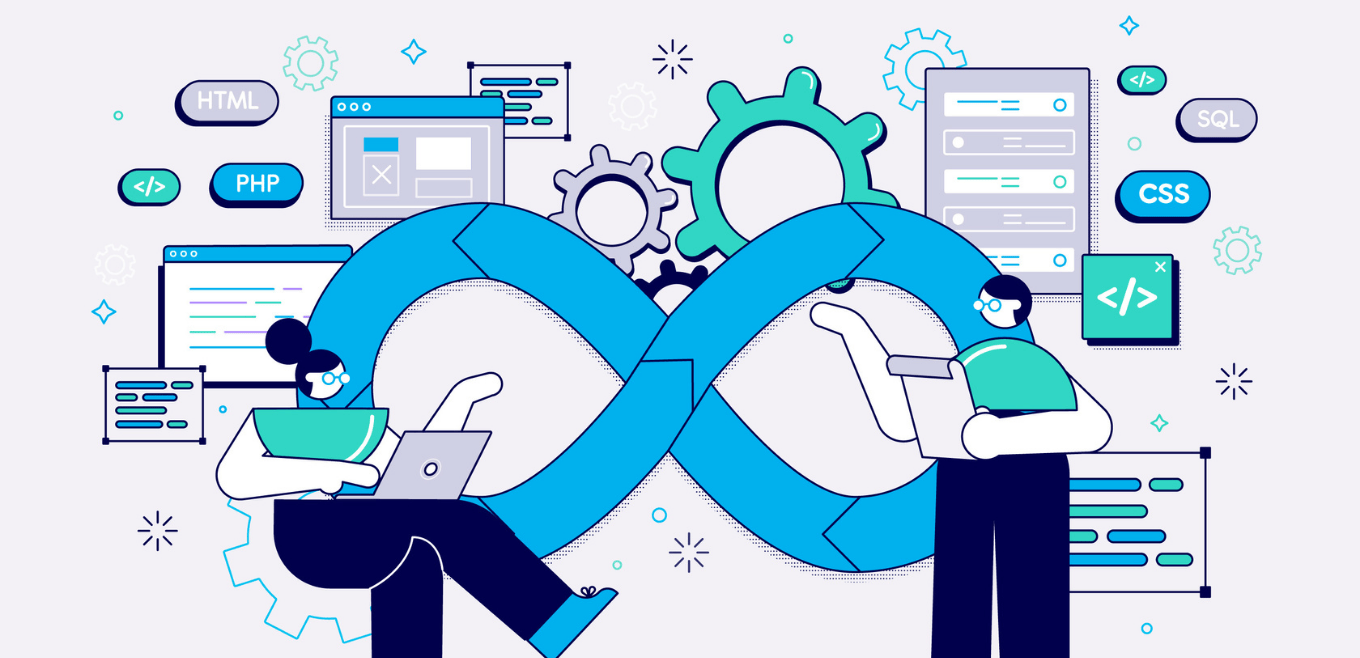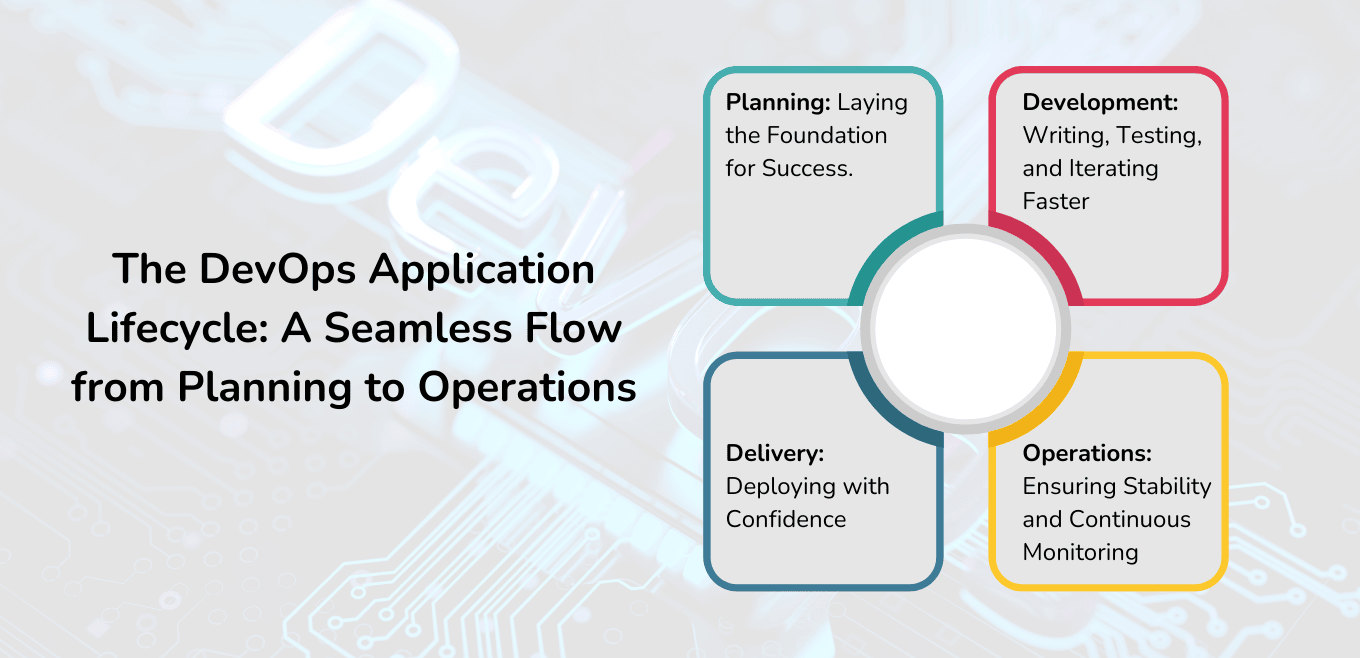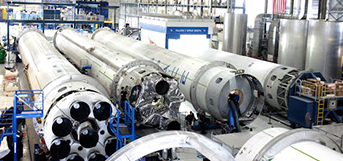Imagine a complex software project where developers, testers, and IT operations work in isolation. The result? Delays, errors, and missed opportunities. Yet, many businesses still operate this way, with Development and Operations teams locked in silos. DevOps changes all of it. It breaks down these barriers, bringing teams together to collaborate, automate, and continuously improve.
This results in faster releases, smoother workflows, and higher-quality products. In today’s fast-paced business world, DevOps is no longer just an IT practice—it’s a game changer that drives efficiency, agility, and innovation across your operations. Let’s dive into why DevOps is essential for your business and how it can bring agility and business success.
DevOps for Businesses of All Sizes
DevOps isn’t a one-size-fits-all approach—it adapts to the unique needs of businesses at every scale. Whether you’re a startup looking for efficiency, a growing company managing increasing complexity, or an enterprise aiming for seamless collaboration, DevOps can transform the way you build and deliver software.
Small Businesses: Automate and Optimize
For startups and small teams, every resource counts. Developers often juggle multiple responsibilities, from writing code to managing infrastructure. DevOps automates repetitive tasks, streamlines workflows, and enhances collaboration, allowing teams to focus on innovation rather than manual operations. With CI/CD pipelines and cloud-native tools, small businesses can move faster without sacrificing quality.
Medium-Sized Businesses: Scale with Efficiency
As companies grow, so do their challenges. More applications, more deployments, and more dependencies mean increased complexity. DevOps provides automated testing, monitoring, and deployment strategies to ensure faster releases with fewer errors. By integrating DevOps best practices, medium-sized businesses can manage multiple development teams while maintaining stability and agility.
Enterprises: Breaking Silos, Driving Innovation
Large organizations often face the challenge of fragmented teams and siloed departments. DevOps fosters seamless collaboration between development, operations, and security, ensuring that all stakeholders work together efficiently. With enterprise-scale automation, compliance-driven workflows, and standardized DevOps practices, businesses can deliver complex applications faster, innovate continuously, and maintain security at scale.
No matter the size of your business, DevOps helps you increase efficiency, enhance collaboration, and accelerate software delivery, giving you a competitive edge in today’s digital landscape.
Want to scale efficiently? Our DevOps experts help businesses of all sizes automate, optimize, and innovate.
The Transformative Power of DevOps: Addressing Development & Operations Challenges
Traditional software development and IT operations operated in silos, leading to inefficiencies, slow response times, and deployment risks. DevOps bridges this gap by fostering collaboration, automation, and continuous improvement, enabling organizations to enhance stability, accelerate releases, and improve business agility.
Challenges in DevOps: Roadblocks to Success

DevOps promises faster development, better collaboration, and higher-quality software, but implementing it isn’t always straightforward. Many organizations face obstacles that can slow or even derail their DevOps journey. Let’s explore some of the biggest roadblocks and why they matter.
1. Resistance to Change
DevOps isn’t just a technical shift—it’s a cultural transformation. Many teams struggle to move away from traditional silos, where development and operations work independently. Breaking these barriers requires strong leadership, training, and a commitment to fostering collaboration.
2. Skill Gaps and Upskilling Challenges
DevOps teams need a blend of development, operations, automation, and security expertise. However, many organizations lack professionals with the right skill set. Upskilling existing employees and hiring DevOps-savvy talent can be time-consuming and costly, slowing adoption.
3. Tool Sprawl and Integration Issues
The DevOps ecosystem is packed with tools for CI/CD implementation, infrastructure automation, monitoring, and security. While these tools are powerful, integrating them into a seamless workflow can be complex. Teams often struggle with tool overload, version mismatches, and inconsistent adoption.
4. Security as an Afterthought
Speed is a key DevOps advantage, but security can’t take a backseat. Many organizations fail to implement Shift Left security—where security checks happen early in development. Without embedding security into the pipeline, businesses face compliance risks and vulnerabilities.
5. Legacy Systems and Outdated Infrastructure
Many companies still operate on legacy systems that weren’t built for automation, cloud computing, or continuous deployment. Retrofitting these systems into a DevOps framework can be expensive and complicated, leading to slow progress and technical debt.
6. Measuring the Right Metrics
Tracking DevOps success goes beyond deployment speed. Many teams struggle to measure meaningful KPIs like reliability, customer experience, and defect rates. Without clear metrics, it’s difficult to demonstrate DevOps’ true impact on business outcomes.
7. Managing Frequent Changes and Deployments
DevOps encourages frequent releases, but without structured change management, deployments can cause disruptions. Clear approval processes, automated rollback strategies, and transparent communication across teams are crucial for avoiding downtime.
8. Vendor and Third-Party Collaboration
DevOps isn’t limited to internal teams. External vendors and suppliers also play a role in delivering software efficiently. However, ensuring seamless collaboration across multiple stakeholders can be challenging, especially when vendors have different processes and priorities.
While these challenges can slow DevOps adoption, they are not insurmountable. With the right mindset, tools, and strategies, businesses can overcome these roadblocks and unlock the full potential of DevOps.
Overcoming DevOps roadblocks starts with the right support. Experts at People10 are here to guide you through your DevOps journey.
The Core Practices That Enable DevOps Success


1. Continuous Integration & Continuous Delivery (CI/CD)
- CI automates code merging, testing, and validation, catching issues early.
- CD ensures code is consistently deployed to production environments, enabling faster, more reliable releases.
2. Agile development & shorter release cycles
- DevOps embraces Agile principles, promoting iterative development and continuous feedback.
- Shorter release cycles reduce risks and improve customer responsiveness.
3. Infrastructure as Code (IaC) & configuration management
- IaC allows infrastructure to be provisioned and managed through code, ensuring consistency and scalability.
- Configuration management automates system settings, reducing manual errors and maintaining compliance.
4. Continuous monitoring & incident management
- Artificial Intelligence (AI)-powered monitoring tools enable more accurate, real-time analysis of the data.
- Automated monitoring helps teams proactively address issues, minimizing downtime and improving reliability.
The DevOps Application Lifecycle: A Seamless Flow from Planning to Operations


DevOps isn’t just about automation and speed—it’s about creating a seamless flow across every stage of the application lifecycle. From the initial idea to deployment and beyond, each phase connects to the next, ensuring agility, reliability, and continuous improvement. In a true DevOps culture, every team member plays a role in every phase, fostering collaboration and shared ownership.
Planning: Laying the Foundation for Success
Everything starts with a solid plan. DevOps teams work together to brainstorm, define, and refine features and capabilities, ensuring alignment with business goals. They track progress at every level, from individual tasks to large-scale product roadmaps, using tools like backlog management, bug tracking, and visual dashboards. Agile methodologies such as Scrum and Kanban help teams stay flexible, adaptive, and transparent, making sure everyone moves forward with clarity.
Development: Writing, Testing, and Iterating Faster
The development phase is where ideas take shape. Developers write, test, and review code, ensuring quality and stability at every step. DevOps accelerates this phase through automated testing, continuous integration (CI), and iterative improvements. By breaking work into smaller, manageable increments, teams can catch and fix issues early, keeping the development process smooth and efficient.
Delivery: Deploying with Confidence
Deploying software shouldn’t be a gamble. DevOps makes delivery predictable and repeatable by automating deployments and infrastructure setup. Teams define clear release management processes, incorporating manual approvals where needed and automating everything else. With CI/CD pipelines, automated testing, and scalable infrastructure as code (IaC), organizations can roll out updates frequently, confidently, and without disrupting users.
Operations: Ensuring Stability and Continuous Monitoring
Once an application is live, the work doesn’t stop. The operations phase is all about keeping systems running smoothly, proactively identifying issues, and ensuring high availability. DevOps teams monitor applications in real-time, leveraging telemetry data, intelligent alerting, and automated responses to minimize downtime and security risks. When problems arise, they act fast, armed with full visibility into the application and its underlying infrastructure.
By integrating these phases into a continuous loop of planning, building, delivering, and monitoring, DevOps ensures that software evolves efficiently, reliably, and in sync with customer needs.
DevOps and Agility: Driving Speed, Flexibility, and Innovation
In today’s fast-paced tech landscape, agility isn’t just an advantage—it’s a necessity. DevOps and cloud migration go hand in hand, enabling teams to build, deploy, and scale applications with unprecedented speed and flexibility. By leveraging cloud-native technologies, automation, and modern deployment strategies, organizations can move from idea to execution faster than ever before.
Cloud-powered Agility: Build and scale on demand
Gone are the days of purchasing and configuring physical servers. With cloud platforms, teams can spin up and tear down multi-region environments in minutes, ensuring they have the resources they need—exactly when they need them. This on-demand scalability makes it easier to experiment, iterate, and deploy without the bottlenecks of traditional infrastructure.
Kubernetes and Containers: Automating at scale
As applications become more complex, containerization has become the go-to solution for packaging and deploying software efficiently. Kubernetes takes it a step further by orchestrating containers at scale, automating deployments, load balancing, and monitoring across environments. By integrating Kubernetes with CI/CD pipelines, teams can push updates frequently and reliably, reducing downtime and improving overall system resilience.
Serverless Computing: Focus on code, not infrastructure
Why spend time managing servers when you can focus on delivering value? Serverless computing abstracts infrastructure management, allowing teams to run applications without worrying about provisioning, scaling, or maintenance. Whether it’s event-driven functions or full-scale applications, serverless architectures reduce operational overhead while increasing agility and cost efficiency.
Why People10 is Your DevOps Partner
Speed, efficiency, and innovation are non-negotiable in this revolutionary digital world. You need a DevOps partner who not only understands your challenges but also helps you accelerate development, streamline operations, and deliver high-quality software with confidence. That’s where People10 comes in.
As a profound software development company, we go beyond traditional DevOps services—we embed ourselves in your team, ensuring seamless collaboration, automation, and continuous improvement. Our expertise in CI/CD, Infrastructure as Code (IaC), cloud-native technologies, and automation allows us to build scalable, resilient, and future-proof solutions tailored to your business needs.
Our impact speaks for itself. Here’s how we helped a leading airline transform its software development with DevOps.
Case Study: DevOps Transformation for a Leading Airline
Implementing a scalable DevOps strategy streamlined deployments, reduced errors, and enhanced collaboration using CI/CD pipelines, Infrastructure as Code (IaC), and automated testing. This led to faster feature rollouts, improved reliability, and greater operational efficiency.
Wrapping Up
By now, it must be clear that DevOps isn’t just an option, it is the force that drives innovation, efficiency, and agility. It bridges the gap between development and operations, breaking down silos and fostering seamless collaboration. With faster deployments, stronger security, and a culture of continuous improvement, DevOps is the key to staying ahead. The choice is simple: embrace DevOps or risk falling behind.
Don’t let your competitors pull ahead
Accelerate your growth with People10’s DevOps expertise. Let our DevOps specialists help your business thrive.
Author
Kamal Chauhan excels in DevOps and automation, focusing on infrastructure and application deployment solutions. He designs and implements automated deployment pipelines for diverse applications and sectors.




